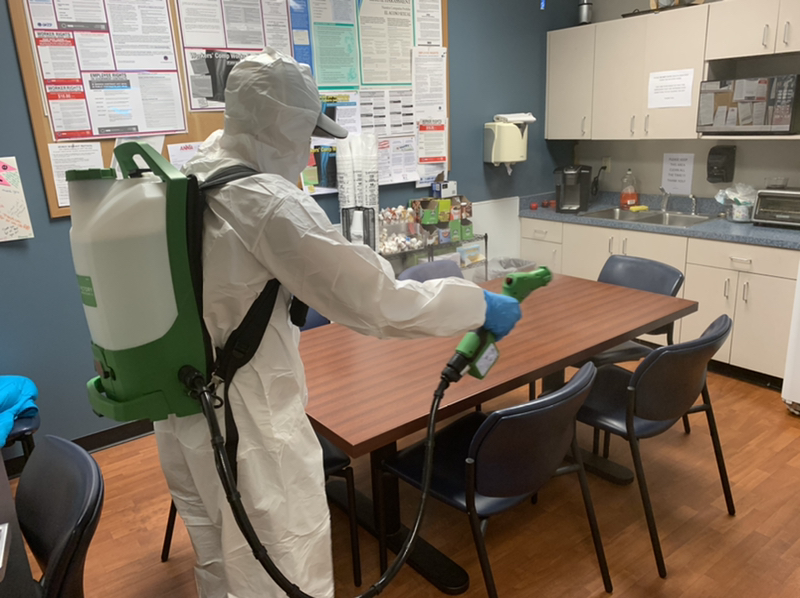Electrostatic Disinfection
Electrostatic Disinfection
Bacteria can quickly accumulate on every surface of commercial and residential spaces, from door handles to keyboards, leading to the spread of contagious illnesses like the flu and strep throat. With the outbreak of coronavirus, maintaining a sanitary environment has become more critical than ever. However, traditional disinfecting and sanitizing methods are often unable to eliminate all bacteria and tiny particles. To effectively prevent illnesses from spreading, you need to adopt a new solution: electrostatic spray technology.
How Electrostatic Disinfection Works
Electrostatic spray technology is a state-of-the-art cleaning method that transforms cleaning solutions into an electrically charged mist. This mist can uniformly cover all surfaces, eliminating harmful contaminants like bacteria and viruses.
By charging the cleaning solution positively, it attracts and covers negatively charged surfaces, effectively eliminating any viruses and bacteria present. This ensures complete coverage, even in hard-to-reach areas. Moreover, this cleaning method is highly efficient and effective because it can repel spray on surfaces that are already covered.
The Benefits of Electrostatic Disinfecting
Electrostatic disinfection is a game-changing method that offers significant time, energy, and cost savings compared to traditional cleaning techniques and cleaning solution applications. Here are some of the many benefits of using an electrostatic system:
- Reduces the time required to cover and disinfect all surfaces, including hard-to-reach areas, by up to 50% compared to conventional methods
- Applies chemicals in a more efficient, uniform, and controlled manner, eliminating the risks of overuse and reducing the amount of chemicals used and waste produced
- Prevents cross-contamination and the spread of bacteria from one surface to another
- Improves infection control and prevents the spread of viruses such as coronavirus, influenza, MRSA, HIV, and many others
- Helps prevent costly financial burdens associated with contagious healthcare infections
Call 614.310.8041 to make an appointment
261 E Wilson Bridge Rd, Worthington OH, 43085 , 614.310.8041, puratechclean@gmail.com

About Us
With over 30 years of experience in the service industry, we take pride in serving central Ohio and continuously enhancing our services through ongoing education and advanced equipment. We are certified in commercial carpet maintenance and specialize in providing top-notch services to businesses.





